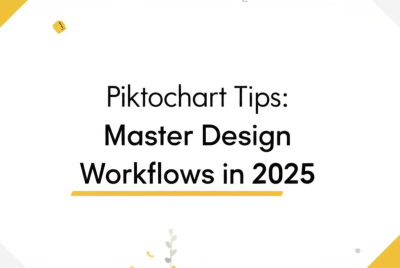They pay for the light bulbs, give you work to do, and provide avenues to apply your creative talent – clients. Sadly these lot of humans can be difficult to manage yet they remain essential for revenue growth; A 5% increase in customer retention can lead to a 25-95% increase in profitability and 84% of companies that work to improve their customer experience report an increase in revenue.
A good designer should aim to be the go-to for all design needs of a client winning referrals along the way. But This only happens when your client’s game is on top.
In this piece, we cover the 5 essential things you should avoid saying or doing to clients.
Follow these tips with your next or existing clients and watch your relationship game explode.
Here Are 6 Things Not To Say To A Client
1. I am sorry but I can’t Deliver: Never Miss Deadlines.

The good bible warns about delays, the Quran and Buddhism too. Virtually all books of wisdom warn against delays or missing deadlines and there’s a good reason why; Promises once unkept leave a taste of unreliability.
But here’s the thing very few times we fail to deliver. Studies by project.co say only 16% of people meet their deadlines on here are few reasons stopping you from being the designer of your word.
- Optimism Bias. Giving deadlines without accounting for worst-case scenarios
- Time management. Inability to prioritize tasks and concentrate energy where it matters.
- Rejecting Impossible Deadlines. A 100-page brochure in 3 days is a deadline missed before it begins.
- No reminders. It happens, that important tasks are forgotten till a clients refreshes your memory. Utilize reminder apps to stay on top of things
Identifying these reasons is a sure way of helping you meet your deadlines. work with them in the future.
2. Fault Blaming

Blaming eases the tension on your side shifting the reason for a problem to the other side. However A. Williams from heartmanty calls blaming a way to avoid responsibility”.
In interactions with clients problems occur which don’t always originate from the designer e.g wrong copies could be sent.
If this occurs avoid words like “it’s your fault not mine” Am not to blame, you are” Instead show a problem-solving mindset where hurdles present themselves rather than complaints.
Some tips for adopting a problem-solving mindset.
- Positivity. Focus on the positive aspects of situations and see difficult situations as circumstances that won’t matter in a few days.
- Growth Mindset. Adopt a Growth Mindset by embracing challenges as opportunities for growth and view mistakes as learning experiences.
- Practice Empathy. Put yourself in others’ shoes to understand their perspectives and consider their intentions.
- Self-Awareness. Recognize fault-finding tendencies, and redirect your thoughts ASAP.
Problem solvers are 100% bound to solve problems while complain mongers don’t. Be the former!
3. Never Say An Original Is A Copy

In 2013 fashion company Ingrid and Isabel sued Baby Be Mine over claims of utilizing Its website look and feel. The company claimed Baby Be Mine had used the same dressing patterns of models, logo lettering, fonts, and color on its website
The issue here wasn’t Baby Be Mine but a web designer who presented copies as originals. If your work is derivative of an inspiration then ensure there’s a marked difference.
The backlash clients suffered by a brand for copyrights extends beyond cash payments to include a loss of equity. Here’s Some tools to escape copyright issues for clients
- Conduct thorough research. Understand existing designs and trends in your field, but always strive to add unique perspectives.
- Seek Permission. Avoid using copyrighted material without permission or proper licensing, as this can lead to legal issues.
- Document. Keep detailed records of your design process, including sketches, drafts, and notes.
- Use Tools. Programs like Google Images, TinEye, and Adobe Stock allow you to upload an image or input a URL to search for similar images across the web.
Apply these tools to keep your clients away from lawsuits or tainting your career!
4. I Know Better: Ignoring Your Client’s Feedback.

Feedbacks that aren’t approval-based can hurt or be frustrating, particularly when these feedbacks aren’t constructive. But it’s our jobs as designers to not ignore our client’s feedback if we don’t ’like their idea’ but to shape that idea creatively into something special says cj of cj.cawley design.
You could ignore but ignoring isn’t the collaborative approach that clients want. You could also say I know better but that’s just plain egotistic.
Instead, use the question-back approach to transform feedback into helpful suggestions. Why do you think so, show me what you like, Should we try this? are helpful questions back approaches to deepen feedback.
If implementing feedback is a bad option then be respectful to their view while you showcase your understanding. You could for instance state how similar problems have been solved by you, the Industry’s stand on the matter, or similar projects utilizing your ideas. The point is to respectfully tell them “they are off the aim”
Some further tips for managing feedback
- Explain. Showcase past works suggesting experience in previous tasks
- Identify. Stay open-minded and identify the problem wrong color palette, font, and layout.
- Ask someone. A major feedback too huge to implement or you just can’t see its use? Try asking a colleague for an objective view.
- Go Paper. For major projects Ask clients to sign a written notice that you strongly advise against the current creative direction and won’t be held liable for its outcome.
5. My Price Is The Best: Charging Too Highly

The amount of effort has never determined the value of work rather who’s paying does; A 100K logo design pinches a roadside business more than a multinational
It’s up to designers to figure out the revenue of clients and bill accordingly. What further justifies your charge is the value you offer.
If a 100k logo goes for 1.2 Million to another firm, what extra work goes into its creation?
But charging fairly goes both ways.. avoid charging poorly no matter the client. This sets a bad precedent where clients expect design services to cost certain low figures for designers.
Some tips on charging fairly
- Determine use cases. Figure out the need for your work i.e. is your creative the pillar of their business e.g a website for a delivery company or just a smaller need e.g flyer design announcing a new hire.
- Gauge revenue base. Charge according to revenue base understanding that a website design for a brick-and-mortar business should cost less than multinationals.
- Focus on value. When charging higher go the extra mile. Include more stages for clearly showcasing your creative process to clients such as presenting 2-3 design directions before proceeding,
- Don’t be afraid to call crazy figures. Designers often undersell themselves so call crazy figures to get the best deals but keep things within the paying range of clients.
These suggestions help you earn well while delivering value. Use them
6. You Are The Devil: Never Name Call Or Drag Clients.

Name-calling clients happens when designers speak rudely, display chats with clients online and repeatedly seek public attention on sour interactions.
Multiple revisions, underpaid work and not being appreciated are hard situations to manage but never name-call clients exit gracefully and quietly instead Calling out clients online could deter others from partnering with you … every prospect wonders if they might suffer a similar fate with you if interactions go sour.
Always Keep things civil with clients. Some helpful tips to do so.
- Ensure clarity in design needs, expectations, deliverables, pay, and other aspects that often turn out to be sources of conflict.
- Show respect for their views, and showcase yours where necessary without being dismissive.
- If things get steamy ensure a glass of water is nearby or take a 3-second breather.
- If you can’t deal with conditions attached to working with a client exit from the get-go.
Keep Clients. Grow Revenue
64% of businesses say they can notice sales growth due to good customer service. Excelling in design thus goes beyond talent or skill, or technical proficiency in design to include people management.
Granted client’s sometimes aren’t the best of people( the reverse is also true) but handling them determines if you rise or sink in the business.
The tips above are a good way to preserve your clientele. But the books below are a further step. Enjoy.
Top Books For Managing Clients Effectively
1. “The Trusted Advisor” by David H. Maister, Charles H. Green, and Robert M. Galford: Practical guidance on building trust and client relationships, covering understanding needs, credibility, and long-term partnerships.
2. “Never Lose a Customer Again” by Joey Coleman: Strategies for creating memorable customer experiences and fostering loyalty through actionable insights and case studies.
4. “Customer Success” by Nick Mehta, Dan Steinman, and Lincoln Murphy: Focuses on proactive customer success strategies to achieve desired outcomes, reduce churn, and enhance satisfaction.
5. “Getting to Yes” by Roger Fisher, William Ury, and Bruce Patton: Offers a negotiation framework for managing clients and conflicts, aiming for mutually beneficial solutions.
6. “Hug Your Haters” by Jay Baer: Insights on effectively managing client feedback and complaints in the digital era, turning negatives into positives.
7. “Building a StoryBrand” by Donald Miller: Provides a framework for crafting compelling brand messages that resonate with clients and drive action, emphasizing clear communication.


Insightful as always! 💪🏽🔥